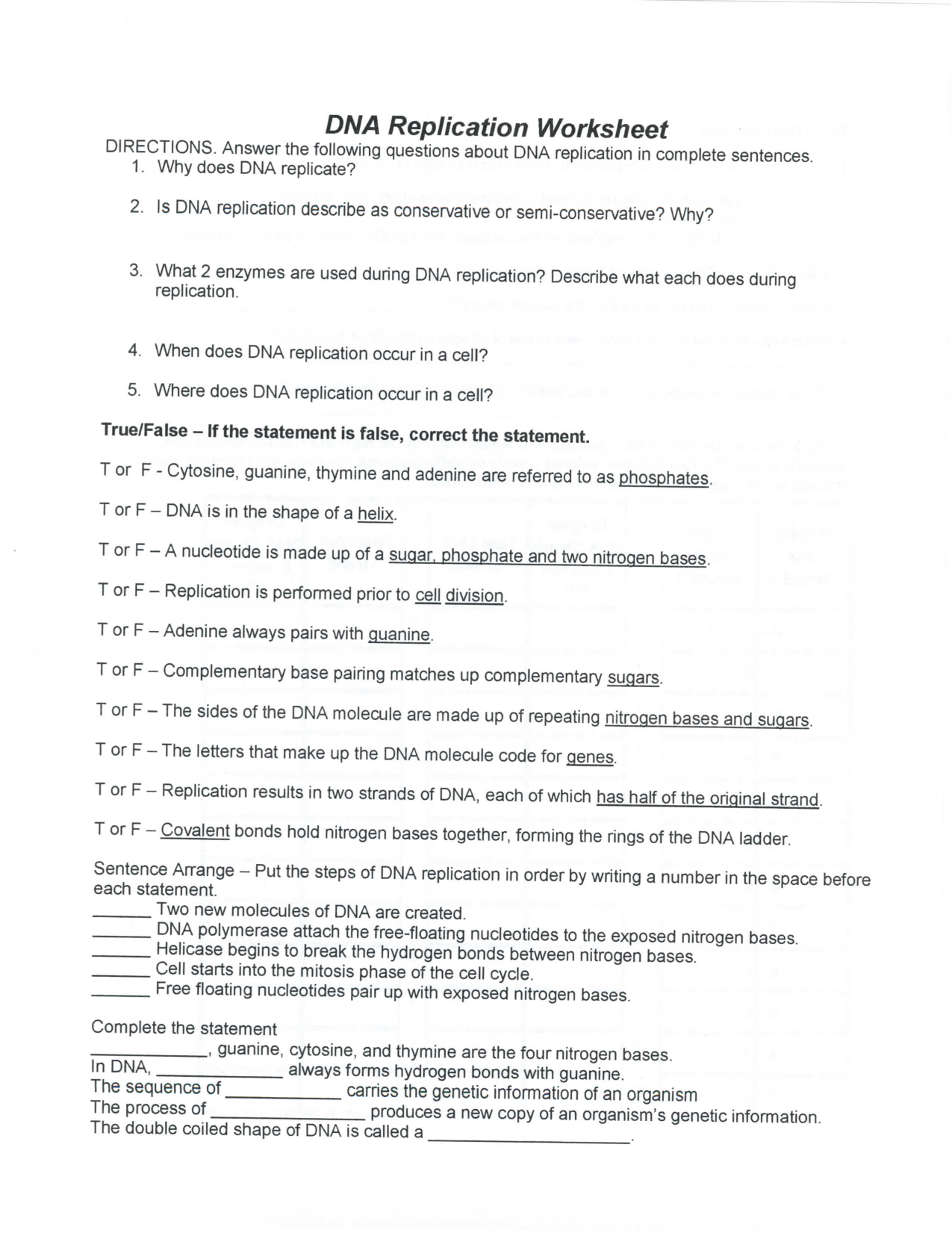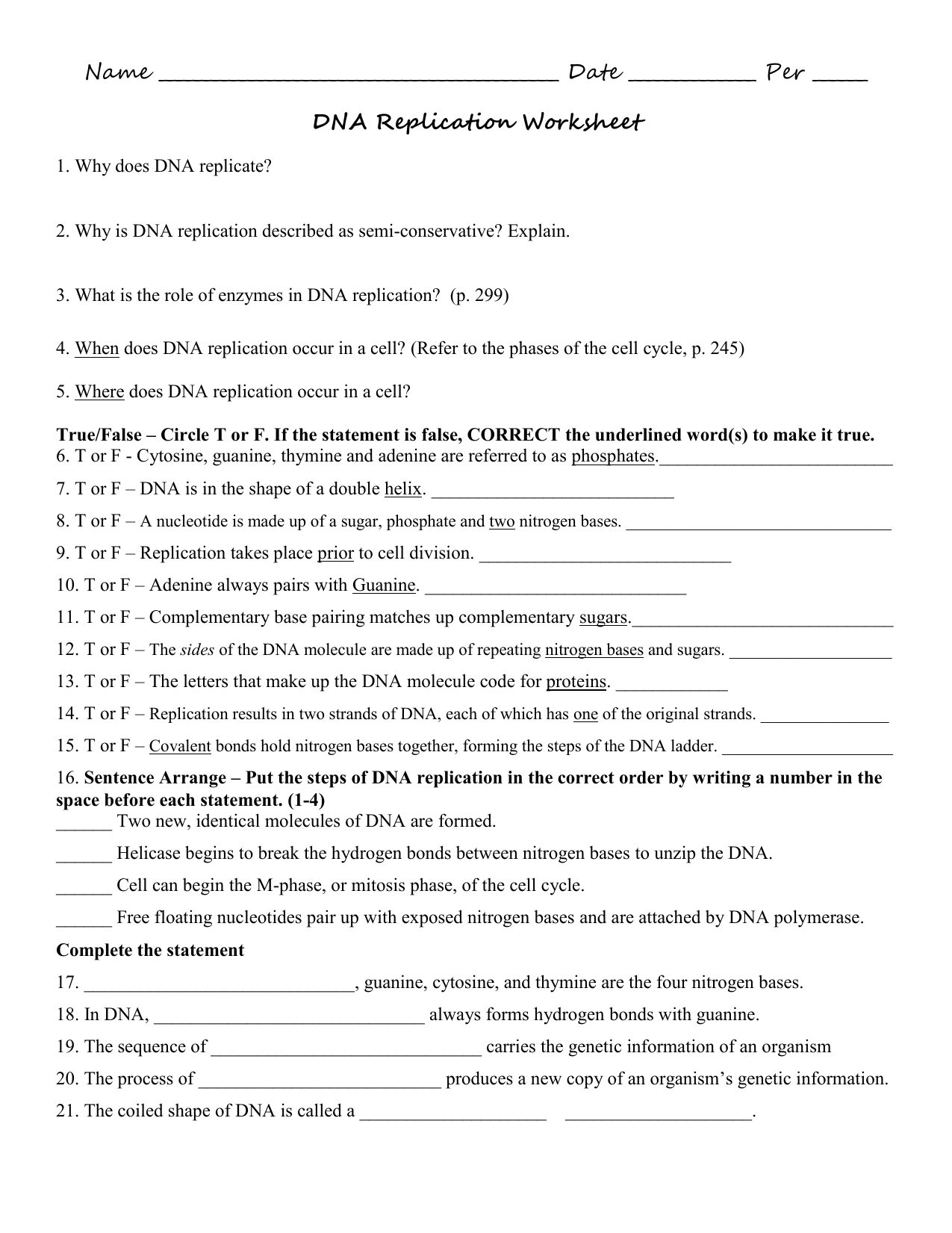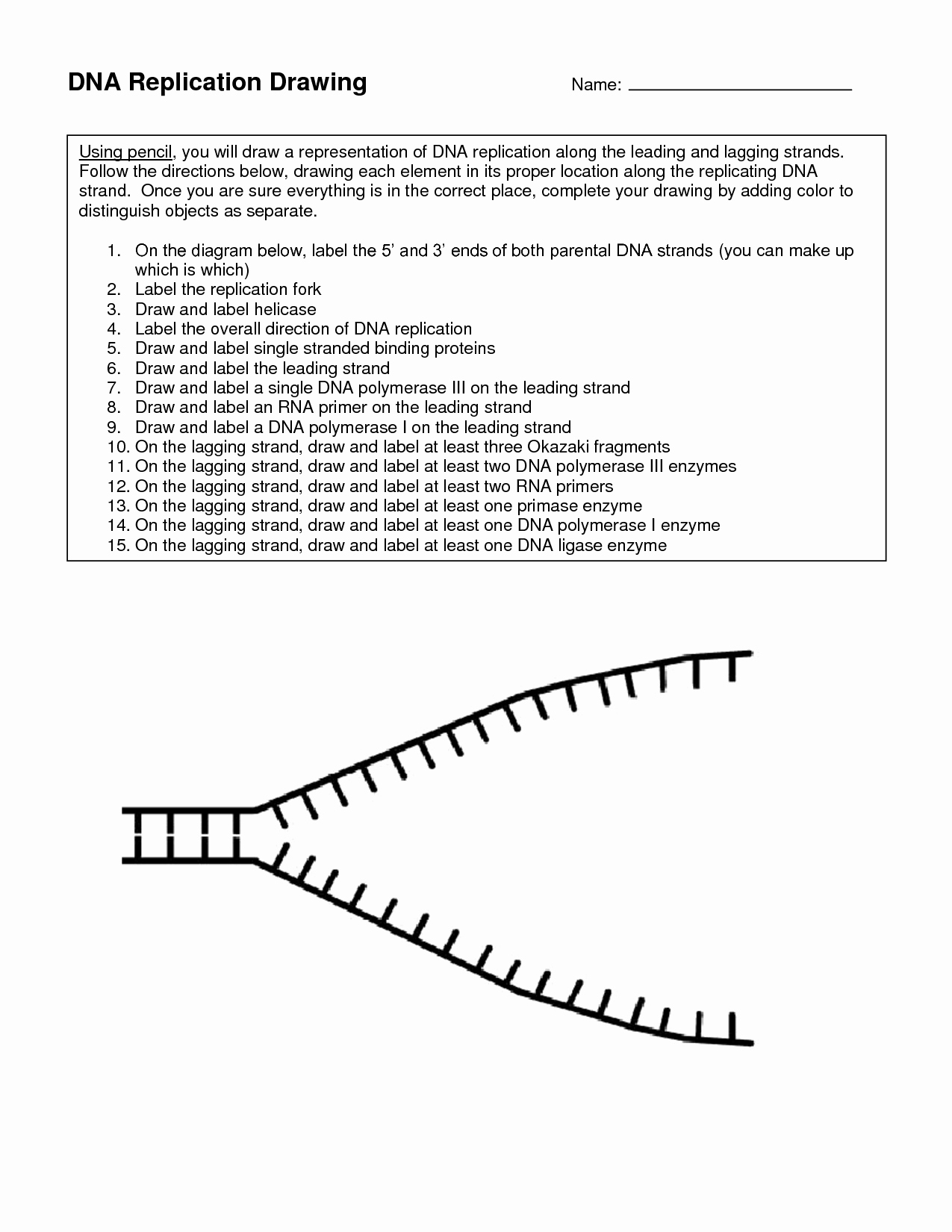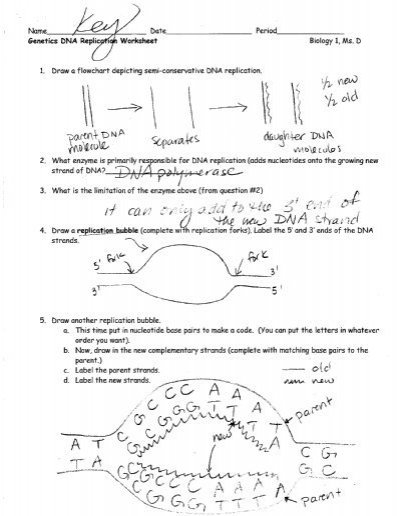DNA and Replication Worksheet Answer Key
DNA, or deoxyribonucleic acid, is the genetic material that carries the instructions for the development, functioning, growth, and reproduction of all living organisms. It is a double-stranded molecule made up of nucleotides, which consist of a sugar, a phosphate group, and a nitrogenous base. The process of DNA replication is essential for cell division and the transmission of genetic information from one generation to the next.
During DNA replication, the two strands of the double helix unwind and separate, serving as templates for the creation of new complementary strands. This process ensures that each daughter cell receives an identical copy of the genetic material. Understanding the mechanisms and key components involved in DNA replication is crucial for scientific research and advancements in genetics and biotechnology.
Answer Key
1. The nitrogenous bases in DNA are adenine, thymine, cytosine, and guanine.
2. The complementary base pairs in DNA are adenine with thymine and cytosine with guanine.
3. The enzyme responsible for unwinding the DNA double helix during replication is helicase.
4. DNA polymerase is the enzyme that synthesizes new DNA strands by adding nucleotides to the template strand.
5. The leading strand is synthesized continuously in the 5′ to 3′ direction, while the lagging strand is synthesized discontinuously in the form of Okazaki fragments.
6. DNA ligase joins the Okazaki fragments on the lagging strand to form a continuous DNA strand.
7. The replication fork is the Y-shaped structure formed during DNA replication, where the parental strands are unwound and new strands are synthesized.
8. Telomeres are repetitive sequences located at the ends of linear chromosomes that protect them from degradation during replication.
9. Errors in DNA replication can lead to mutations, which can have detrimental effects on cell function and can contribute to the development of genetic disorders and diseases.
In conclusion, the DNA and replication worksheet answer key provides essential information on the processes and components involved in DNA replication. By understanding the key concepts and mechanisms outlined in the answer key, scientists and researchers can further explore the complexities of genetic inheritance and cellular function. DNA replication is a fundamental process that ensures the accurate transmission of genetic information, and the answer key serves as a valuable tool for educational purposes and scientific endeavors.




